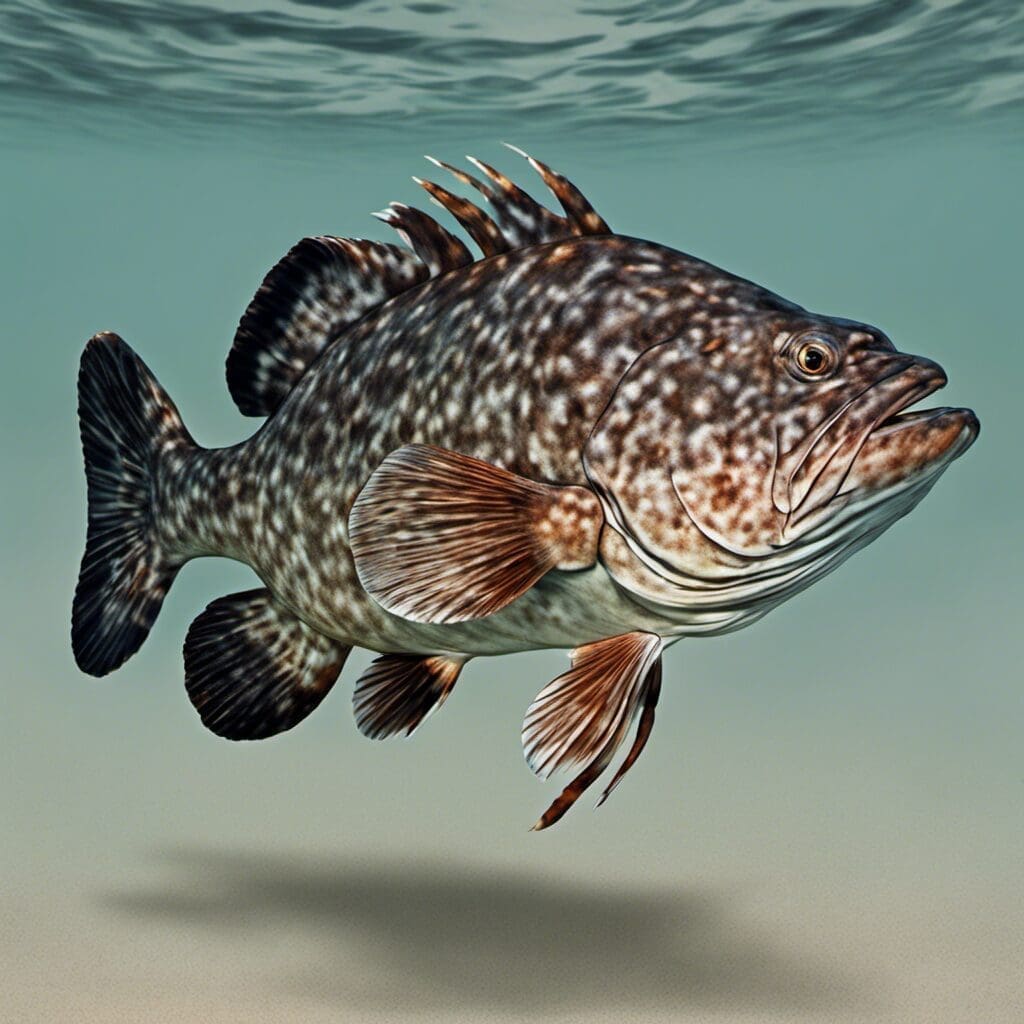Introduction
The Goliath grouper, scientifically known as Epinephelus itajara, is a large species of grouper that belongs to the family Serranidae. It is one of the largest species of bony fishes found in Atlantic and Pacific Coasts.
Conservation Status
As of the present, the Goliath grouper is listed as critically endangered by the International Union for Conservation of Nature (IUCN). Conservation efforts are mainly focused on habitat protection and enforcing fishing restrictions.
Statistics
| Statistics | Average | Range |
|---|---|---|
| Length | 3.3 ft | 4.6 – 8.2 ft |
| Weight | 400 lbs | 100 – 800 lbs |
| Average Lifespan | 37 years | – |
Distribution
The Goliath grouper is commonly found in the Atlantic Ocean, particularly in regions such as the Florida Keys, Bahamas, Cuba, Jamaica, and Brazil. They are known to be homebodies, having a low tendency to migrate.
Habitats
- Water type: Marine and Brackish
- Depth range: Commonly found at depths of 16 to 82 feet
- Temperature range: Prefers warmer waters of 68 – 88°F
When and Where to See
Goliath groupers are most active and easily observed during the spawning season, which is July to September. They are typically encountered during the daylight hours.
Best Fishing Locations
- Florida Keys, USA
- Jardines de la Reina, Cuba
- Fernando de Noronha, Brazil
- Andros Island, Bahamas
- Koh Tao, Thailand
- Mauritius Island, Mauritius
- Blue Hole, Belize
- Roatan, Honduras
- Cozumel, Mexico
- Grand Cayman, Cayman Islands
If specific locations aren’t known, look for coral reefs and mangroves which are their preferred habitats.
How to Catch
Given their protected status, catching Goliath groupers is not recommended. However, for observational and research purposes, they are attracted to large bait such as crabs and squid as well as shiny lures. Common fishing techniques include bottom fishing. Best time to observe these creatures are during their active breeding period – mid-summer to early fall.
Identification Guide
The Goliath grouper is easily identified by its large size, with full-grown adults usually being 2.5 to 3.5 ft long. They are also distinguishable by their mottled yellow-brown to grey color, with dark markings that form a rough, hexagonal pattern on the body.
Culinary
Though it’s illegal to catch and cook Goliath grouper due to its critically endangered status, those who have had the opportunity describe its meat as mild in flavor with a sweet undertone. The texture is a unique blend of firm and flaky.
Additional Information
Goliath groupers are known to be solitary creatures with diets consisting mainly of spiny lobsters, fish, and occasionally small sea turtles. The main predators of the Goliath grouper include sharks, barracudas, and humans. Overfishing has led to a stark decrease in their population numbers, leading to their current critically endangered status.
References and Further Reading
- FishBase – Epinephelus Itajara
- Florida Museum – Goliath Grouper
- Oceana – Goliath Grouper

